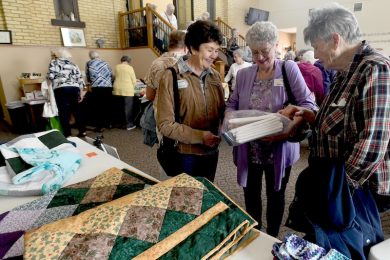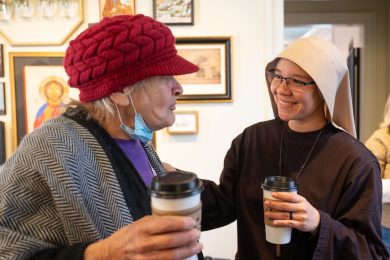By Gina Christian | OSV News
(OSV News) — A Chicago film studio is blending faith with fun in a series of pint-sized catechetical videos just for kids.
Spirit Juice Studios recently received a 2023 Gabriel Award from the Catholic Media Association for its short feature “How to Pray,” an episode in the company’s new “Juice Box” series, available on YouTube.
Launched in November 2022, Juice Box “helps pass the faith on” to young children, especially those in the “age 3 to 6 group,” Spirit Juice president and CEO Rob Kaczmark told OSV News.
The free content is funded through donations to the studio’s nonprofit Spirit Juice Entertainment Group and by subscribers through the Patreon platform, who also can access additional Juice Box material.
Kaczmark and his team of some 30 staffers, many with theology degrees, work closely with clergy to “create stuff in line with the magisterium (authoritative teaching) of the church,” he said. “We’re not trying to do anything goofy.”
The series features among others Catholic music artist Steve Angrisano and filmmaker and actor Melinda Simon.
Popular Juice Box episodes include “Questions for a Priest,” “Lego Confessional,” “Who Is Mary?” and “Let’s Play Mass.”
The series’ combination of live action, animation, bright colors, song and dance — featuring both grown-up actors and kids — packs robust spiritual nutrition that goes down smoothly.
For example, in just 15 minutes “How to Pray” manages to explore the basic structure of human conversation, the theology of prayer and the mystery of the Trinity, while setting the “Glory Be” to an upbeat melody and leaving viewers with the handy acronym “C.A.T.S.” (confession, adoration, thanksgiving, supplication) for approaching prayer.

Kaczmark said he draws on his experiences as both a catechist and a parent when crafting the videos, using a light touch while remaining focused on imparting church teaching.
“If (kids are) laughing, they’re learning,” he said, stressing as well the need to “stick with a theme” and avoid presentations that are “dry and boring.”
In addition, the final product “has to feel authentic to the medium, which for us is YouTube.”
He admitted that Catholic catechesis projects often “sort of lose it there” by neglecting the nuances of a given creative platform, thereby missing the chance to fully engage an audience.
“You don’t show up to a football game with a baseball mitt,” said Kaczmark, who has more than 16 years of experience in producing mission-related videos for clients such as the U.S. Conference of Catholic Bishops, the Knights of Columbus, Word on Fire and an array of dioceses, parishes, seminaries, schools and other Catholic organizations.
“Creating a play element” in the episodes is central to Juice Box’s production values, he said.
“Kids learn by playing,” said Kaczmark. “They’re learning these little elements of faith through that.”
Yet treating the central mysteries of the Catholic faith, especially Christ’s suffering and death, requires an “age-appropriate” strategy, he admitted.
“That’s key,” he said. “For example, ‘The Passion of the Christ’ film (by Mel Gibson) brought a realness and a lot of blood. You got the full view. For us, we use an age-appropriate version of the Stations of the Cross, with Legos and giant bronze statues of Jesus, but no blood. Those visual components can make or break the age appropriateness.”
Kaczmark also pointed to his kid-friendly take on the martyrdom of St. Lawrence. According to pious retellings by St. Ambrose of Milan and others, the third-century deacon was alleged to have been roasted alive while telling his killers, “I am cooked on that side; turn me over and eat.”
Rather than reenacting the grisly scene, Kaczmark took to the kitchen, “cooking dumplings while integrating the story,” he said.
Music also can “tone down” more difficult aspects of the Christian story, making them more accessible to very young children, he said.
Having children act in the videos can be tricky, he said.
“You have a bunch of kids with their parents and the crew in the studio, under the lights and with all the people staring at them,” Kaczmark said. “Sometimes they just freeze up. You have maybe a 20 to 30-minute window with them, and they’re done.”
But perhaps the biggest challenge in producing the series is “consistency,” said Kaczmark.
Amid the grind of regular film production, “the shine can wear off,” especially when “you work hard to put out a video and it doesn’t get as many views” as expected, he admitted.
As an artist, he reminds himself that “when you put something out there for others to experience, it’s not just yours anymore; it’s theirs.”
Yet that risk brings rewards, he said.
One parent wrote to tell him his video on first confession allayed her daughter’s fears over her reception of the sacrament.
“That meant the world to me,” said Kaczmark. “Being part of a kid’s childhood is really special; a unique privilege and opportunity.”
And whether the project is “big or small, at the end of the day, this is a mission of the church,” he said.




















